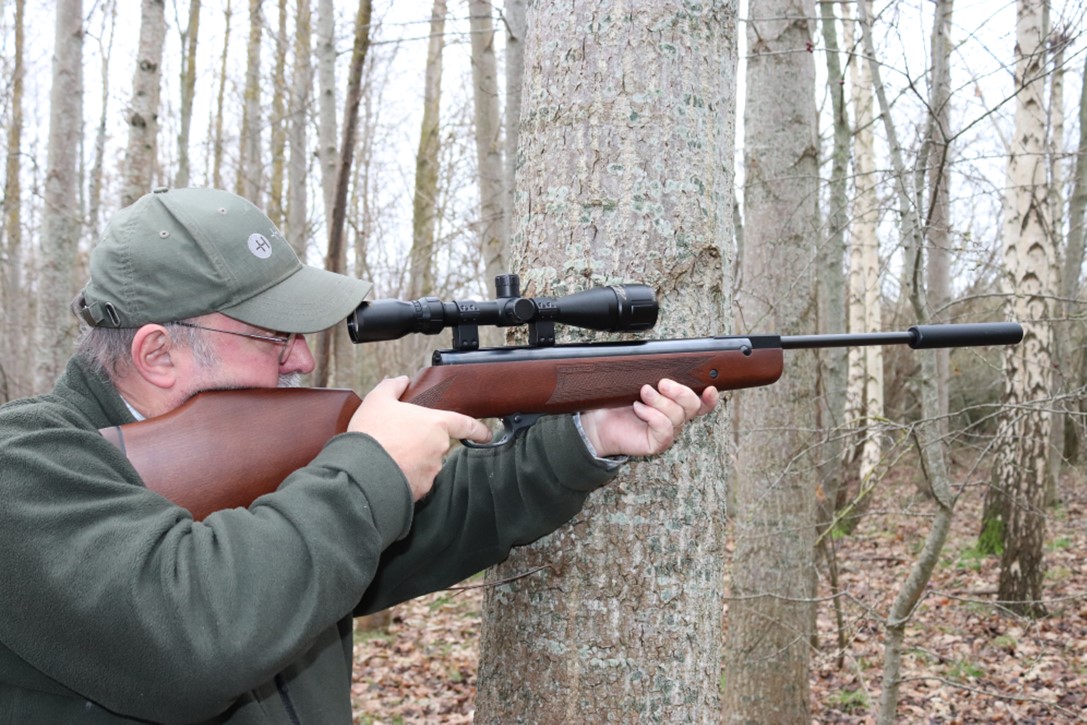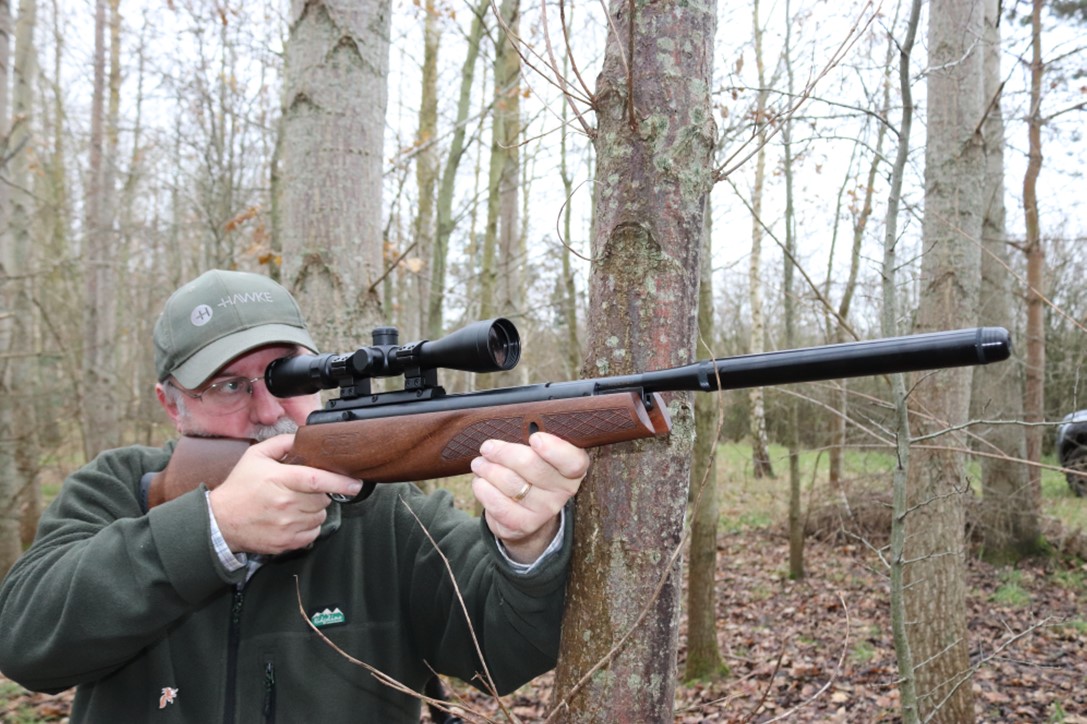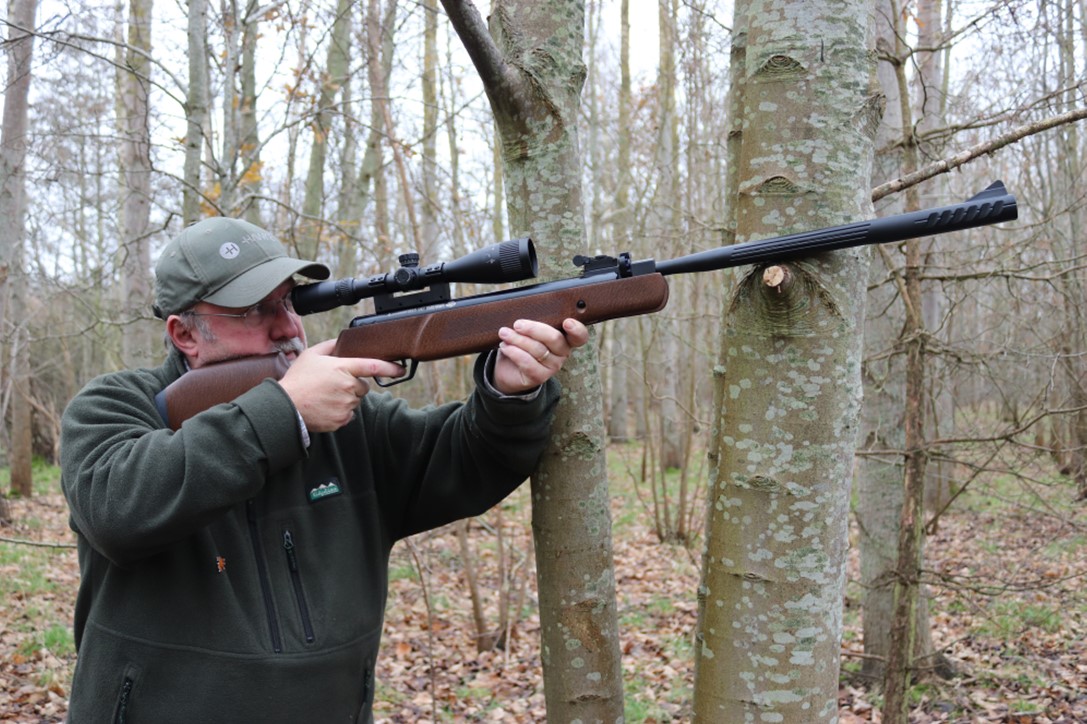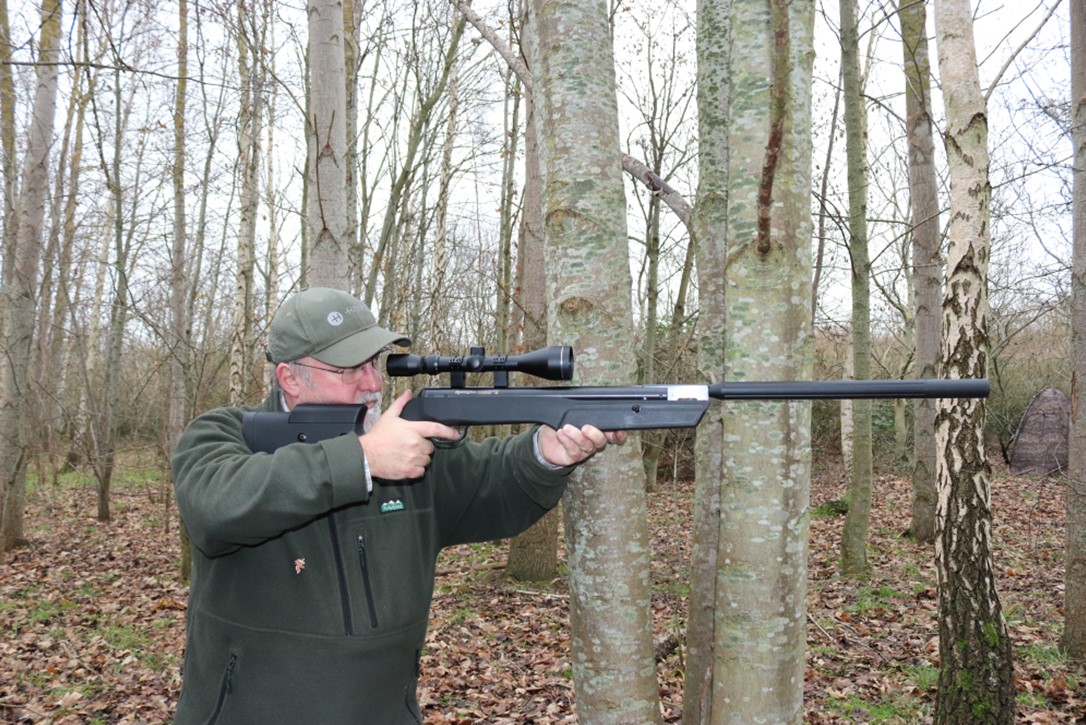As a schoolboy in the early 80s, most break times were spent talking about airguns with my mates. We covered all the important topics; .177 versus .22, and whether British guns like BSA and Webley were better than exotic brands like Weihrauch and Feinwerkbau. One day. someone brought in a copy of Airgun World. We gathered around. A page was turned and there it was – a picture of the new Theoben Sirocco. The break-room went quiet and I’m sure our collective mouths fell open. Not only did this incredible rifle set a new standard for aesthetic perfection, but it also represented a completely new technology – the gas-ram. Although it looked and operated like the break-barrel springers we were all used to, the reviewer explained that power came from compressing a sealed chamber of gas rather than a spring.
Sadly, Theoben went the way of many other British air rifle brands. However, the innovative concept apparently inspired by the suspension on a Suzuki motorbike has endured, and today, whilst still something of a niche, most manufacturers have at least one gas-ram in their line-up. Detractors criticise a harsh firing cycle; devotees counter by arguing that the lack of a spring bouncing around results in a faster lock time. So, we took a look at four of the best gas-rams, or ‘rammers’, to find out.

Weihrauch HW90K
£630
hullcartridge.co.uk
Weihrauch is perhaps known for making some of the best spring-powered rifles ever made and several models have been in production for 50 years or more. However, its HW90K is no spring chicken either, but remains the company’s only gas-ram.
Carrying a recommended retail price of £630, this is a premium rifle costing more than most other spring break-barrels, and is on a par with some of the premium under-levers, too.
Part of that is perhaps down to the fact that gas-ram power plant is based on Theoben’s design. In fact, many consider the HW90K to be the Sirocco’s spiritual successor.
Panels of laser-cut chequering on both sides of the pistol grip and fore end embellish the elegantly proportioned beech ambidextrous stock. Tipping the scales at 3.8kgs unscoped, and measuring 1,140mm, this is a full-size rifle, but with a point of balance slightly forward of the trigger, much of that weight disappears in the shoulder and helps to reduce the muzzle report to a purposeful thud.
Weihrauch’s springer reputation is largely built on its fabled Rekord trigger, which is still something of a benchmark today, but the gold-coloured and fully-adjustable Elite unit on the HW90K is just as good. Like the Rekord, the two stages are smooth and the let-off breaks cleanly and predictably.
In another departure from the cross-bolt safety catch on its spring-powered siblings, the catch on the HW90K is located forward of the trigger and not on top of the action. Cocking the 310mm barrel – a process made easier by a very effective silencer fitted to a ½-inch UNF thread – is smooth and sets the safety catch automatically. A second button allows you to reset the safety without having to re-break the barrel.
A substantial breech ensures that the barrel locks up solidly and should you notice any movement over time, tightening a couple of large screws should take care of things. The firing cycle is fast, and anyone used to a diet of Weihrauch springers will immediately notice the absence of any ‘twang’ caused by a main spring clanking up and down the chamber.
On the range, and using JSB Exact pellets, our .177 calibre test rifle punched 19mm five-shot centre-to-centre groups at 30 metres with ease. The chrono’ showed a commendable 11.15 ft. lbs. with 8.44 grain pellets and a spread of just eight feet per second over 10 shots.

BSA Lightning XL SE
£399
bsaguns.co.uk
When it comes to break-barrels, it’s fair to say that Weihrauch’s closest rival is BSA. The same is true when it comes to gas-rams where the BSA GRT Lightning XL SE has just as many devotees as the HW90K. The main difference, though, is price. Shop around and you can save more than £200 if you decide to buy British, which is enough to buy a decent scope to go on top.
The XL SE is distinguished from the even more reasonably priced Lightning SE by a full-length silencer that also has a ½-inch UNF thread. The chequering pattern is different, too, and you have the option of a beech or black soft-touch stock.
Weighing just 3kgs, the Lightning XL SE is light, and thanks to a 370mm barrel, it’s compact at only 990mm. The ambidextrous stock is unmistakably BSA with a shapely butt that is finished with a squishy, ventilated shoulder pad.
An indent at the top of the pistol grip encourages a comfortable thumb-up grip and a high comb provides good alignment to a scope mounted on the raised rail that’s designed to absorb movement. If you prefer, the mount can be removed to access underlying dovetail rails.
Despite the full-power action, the GRT Lightning XL SE is smooth to cock, but thanks to that short barrel, needs a firm hand. The barrel breaks with a light tap and locks up tightly when returned.
The cocking process doesn’t set the safety catch located to the right of the action. However, an anti-bear trap mechanism helps to prevent any accidents should you accidentally touch the trigger.
Shouldering the rifle communicates instantly what 160-plus years of experience gives you. The GRT Lightning XL SE felt like it had been made specifically for me. Fortunately, the superb fit is not let down by the trigger. The two-stage trigger has an adjustable second-stage that lets off crisply and gives you every chance of exploiting the potential of the cold hammer-forged barrel.
On the range, our .177 test rifle delivered a very consistent 11.38 ft.lbs. for an average of 770fps with a variance of just 16fps. Unsurprisingly, BSA’s 8.64gn Gold Star pellets performed best, although other brands weren’t far behind, delivering 26mm centre-to-centre, five-shot groups at 30 metres.

Crosman Trailhawk
£249.99
range-right.co.uk
For some reason, magazine-fed break-barrels are often dismissed as plinkers. Whilst they are undoubtedly great fun in the garden, rifles like the Crosman Trailhawk are much more than that. It certainly looks the part, and at 1,140mm and 4kgs, which includes a 3-9 x 40 parallax-adjustable scope and a once-piece mount, it’s full size and full power, as well, with the chrono’ showing an average output of 11.36 ft.lbs.
The good news doesn’t stop there because the Trailhawk is also a fine-looking rifle. The black metal work complements a sporter-style walnut stock that has a solid rubber shoulder pad and patches of chequering both sides of the fore end and pistol grip. A subtle cheekpiece favours right-handed shooters, but for all intents and purposes, the Trailhawk is ambidextrous.
The trigger guard and safety catch located within it are both plastic, as is the trigger blade, and whilst it has two distinct stages with a clear transition between them, there is no apparent means of exterior adjustment, and it lacked feeling.
You get a set of open sights – a windage and elevation adjustable notch at the back and blade at the front – but you’ll want to attach the 3-9 x 40 scope that comes as part of the package. It’s not bad either with ocular and parallax adjustment. The turrets are exposed, and with no capacity to lock them in place, take care you don’t knock them off zero.
A light tap breaks the 465mm barrel, which includes Crosman’s Quietfire Sound Suppression technology. It does a fair job, too, reducing muzzle crack considerably. It also makes the Trailhawk easy and smooth to cock, and that’s good because the 10-shot .22 (12-shot .177) magazine system is quick and easy to use. With pellets loaded into the chambers, the magazine simply snaps into place forward of the rear open sight, and feeds pellets directly into the breech each time you cock the barrel. There are 11 chambers, but don’t be fooled because the last one needs to be empty to allow the magazine to be installed.
Shooting from a rested position and using Crosman Ultra Magnum pellets, the Trailhawk served up 45mm centre-to-centre, five-shot groups at 30m. With the target brought in to 20m, groups reduced considerably to 24mm. Consistency was good at just 7fps over 10 shots.

Remington Thunderceptor
£199.99
justairguns.co.uk
‘Thunderceptor’ – even the name suggests you’ll need a hairy chest and big muscles to handle this Remington rammer. Certainly, that initial impression is reinforced when you get the rifle out of the box. Measuring 1,240mm – that’s an inch over four feet – and weighing more than 4.5kgs, this is, without doubt, a full-size rifle. The Thunderceptor’s brutish appearance is further reinforced by a black plastic stock, relieved by patches of moulded stippling on the pistol grip and fore end and a slimmer waist forward of the trigger.
That’s not to say the Thunderceptor is a crude rifle – far from it.
Undoing a couple of screws enables the height of the comb to be adjusted, and the pistol grip has subtle shelves to guide your trigger finger and thumb. The curved trigger blade is metal, as is the safety lever in front of it, and I was pleasantly surprised by the long, smooth first stage that came to an abrupt stop before breaking cleanly with a little added pressure.
There are no open sights. Instead, the Thunderceptor comes with a 3-9 x 50 scope and a set of mounts. Although a budget item, the scope is plenty good enough until you can save for an upgrade. Whilst you’re at it, treat yourself to a decent set of mounts, too, because there’s no stud on the set provided to exploit the anti-recoil hole on the top of the action.
A light tap is all that’s needed to break the 542mm fully-shrouded barrel, which has the benefit of providing plenty of leverage to complete the cocking stroke. With a pellet inserted into the breech, the barrel shuts with a meaningful snap and locks up solidly. An easily accessible screw means you’d be able to tighten everything up should you notice any play over time.
On the range, the Thunderceptor’s dimensions were all but eradicated, and the 370mm length of pull combined with the adjustable cheek comb made it a very comfortable rifle to sit behind. I used a range of pellets and at 30m found JSB Hades returned the best grouping of around 56mm centre-to-centre. However, with the target brought in to 20m, I was able to place 10-shots within a 10p coin-sized group.
The Thunderceptor lived up to its he-man image when it came to power output, delivering 11 ft.lbs. over 10 shots with a variance of 21fps.
GIVE IT SOME GAS
Without doubt, PCP rifles revolutionised our sport and the almost total lack of recoil has meant just about anyone can shot one accurately, especially from a rested position.
However, we humans are a contrary lot and the easier it has become to shoot PCPs, the more many of us have sought out the challenge of shooting springers that – let’s face it – are harder to shoot because of their recoil. Gas-rams offer the same challenge and will reward good technique just as much as any springer. In fact, with a different firing action due to the way power is delivered, rammers pose different questions, but like a decent springer, a good gas-ram is a pleasure to shoot and will reward good technique by returning levels of accuracy to challenge any springer and quite a few PCPs, too.